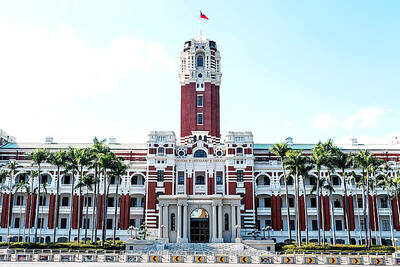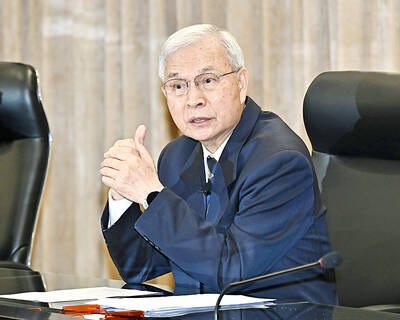During Japan's "lost decade" of economic decline, Osaka was a leader in homelessness, unemployment, bag snatching and groping on trains. Now the port city is pinning its hopes on a 39cm-tall humanoid with an eye on the goal of achieving a more worthy reputation -- that of robot capital of the world.
Weighing in at just 2.4kg, VisiON is the product of Team Osaka, which consists of researchers at Osaka University, two robot firms and an aircraft parts manufacturer.
They built the robot from scratch in only six months with the help of a 15m yen subsidy from the city's government. The investment quickly paid off. VisiON, which uses an omni-directional sensor to give it instantaneous 360-degree visibility, won the humanoid category at last year's Robot World Cup football finals in Lisbon.
It can, without human help, assess the location of the ball, judge how far away it is and then give it a good thump with either foot. "That's easy for humans to do," says Shu Ishiguro, one of the brains behind Japan's Robo Cup-winning team. "But for a robot it is very difficult. The technology is very sophisticated."
VisiON's creators say his skills will be honed before the next tournament, in July in Osaka, when he will be up against robots from 35 countries. Their aim is to put together a team of robots capable of beating the human world football champions by 2050. For now, though, VisiON and other second-generation robots are an integral part of Osaka's efforts to rescue a local economy whose traditional industries and businesses are struggling to find their post-recession feet.
"The Kansai (Osaka, Kyoto and Kobe) economy was stagnant so we needed to come up with a theme that would include as many people as possible," said Shuichi Takano, an official in the Osaka city government's robot design industry section.
"The presidents of the firms I spoke to were pessimistic about their chances, but when I mentioned robots, their eyes lit up.
"Some people say there's no market for second-generation robots, but whereas existing industrial robots are used in situations and places out of bounds for humans, our robots can co-exist with humans.
That's where the potential lies."
Japan has emerged as a leading maker of "next-generation" robots, or those that can act independently to perform complex tasks in such areas as medicine, personal security, welfare and lifestyle.
They include the familiar mass-market "pets" such as Sony's Aibo biped and Hitachi's humanoid rival, Asimo.
Elsewhere the Hospi robot delivers X-ray charts and performs other hospital duties, while Banryu enables homeowners to check their property via remote control while they are out, using real-time video. Wakamaru, Mitsubishi Heavy Industry's house-sitter robot, can surf the internet and call emergency services.
Jaxa, Japan's space agency, plans to have robots exploring the surface of the moon within 20 years. Closer to home, the robot maker ZMP will soon start selling Nuvo, a humanoid home-security robot that takes digital photos and sends them directly to its owner's mobile phone.
Ishiguro believes that it will not be long before robots are preparing and invigilating exams and, in echoes of Knight Rider, taking part in real-time discussions with motorists.
Businesses with a stake in robot technology have reason to feel emboldened. According to the Japan Robot Association, the domestic market for next-generation robots was worth around US$55 million in 2002 but is expected to grow to about US$7.7 billion by 2010.
The trade and industry ministry stepped in to help last year, providing ?4.3bn in subsidies to develop next generation robots, some of which, such as Ligurio, a security robot that can recognise a stranger 50m away, can be seen at the world exposition near Nagoya in central Japan.
Osaka spent ?150 million on robot development in 2004, two-thirds of which went on opening a laboratory in central Osaka at the end of last year. Now occupying a floor high above the busy Umeda district, the lab will form a major part of a 24-hectare plot of land north of Osaka's main railway station that will be developed over the next few years.
Local officials hope that Robo City will be a place where robot developers worldwide can take their ideas, however crazy, knowing that they will be given a fair hearing and, perhaps, see their brainstorms turned into hardware. "In a few years, Osaka will be the Silicon Valley of the robot industry," Ishiguro said.
But before that can happen, Osaka's robot industry says it needs more help in the face of increasing competition from other parts of Japan, South Korea, the US and Europe.
Only about 150 of the 20,000 or so small and medium-sized firms in Kansai are involved in robot development, and cooperation is being hindered by a lack of uniform standards for parts and software. And for an industry whose survival depends on fresh ideas, some old attitudes are proving hard to ditch.
Although a fully domesticated robot is about 40 years away, Ishiguro said: "It will be only several years before you can have a system that can call you on your mobile and ask you what time you'll be home, what you want for dinner, whether you want a bath. It'll be just like having a wife."

The CIA has a message for Chinese government officials worried about their place in Chinese President Xi Jinping’s (習近平) government: Come work with us. The agency released two Mandarin-language videos on social media on Thursday inviting disgruntled officials to contact the CIA. The recruitment videos posted on YouTube and X racked up more than 5 million views combined in their first day. The outreach comes as CIA Director John Ratcliffe has vowed to boost the agency’s use of intelligence from human sources and its focus on China, which has recently targeted US officials with its own espionage operations. The videos are “aimed at

STEADFAST FRIEND: The bills encourage increased Taiwan-US engagement and address China’s distortion of UN Resolution 2758 to isolate Taiwan internationally The Presidential Office yesterday thanked the US House of Representatives for unanimously passing two Taiwan-related bills highlighting its solid support for Taiwan’s democracy and global participation, and for deepening bilateral relations. One of the bills, the Taiwan Assurance Implementation Act, requires the US Department of State to periodically review its guidelines for engagement with Taiwan, and report to the US Congress on the guidelines and plans to lift self-imposed limitations on US-Taiwan engagement. The other bill is the Taiwan International Solidarity Act, which clarifies that UN Resolution 2758 does not address the issue of the representation of Taiwan or its people in

US Indo-Pacific Commander Admiral Samuel Paparo on Friday expressed concern over the rate at which China is diversifying its military exercises, the Financial Times (FT) reported on Saturday. “The rates of change on the depth and breadth of their exercises is the one non-linear effect that I’ve seen in the last year that wakes me up at night or keeps me up at night,” Paparo was quoted by FT as saying while attending the annual Sedona Forum at the McCain Institute in Arizona. Paparo also expressed concern over the speed with which China was expanding its military. While the US

SHIFT: Taiwan’s better-than-expected first-quarter GDP and signs of weakness in the US have driven global capital back to emerging markets, the central bank head said The central bank yesterday blamed market speculation for the steep rise in the local currency, and urged exporters and financial institutions to stay calm and stop panic sell-offs to avoid hurting their own profitability. The nation’s top monetary policymaker said that it would step in, if necessary, to maintain order and stability in the foreign exchange market. The remarks came as the NT dollar yesterday closed up NT$0.919 to NT$30.145 against the US dollar in Taipei trading, after rising as high as NT$29.59 in intraday trading. The local currency has surged 5.85 percent against the greenback over the past two sessions, central